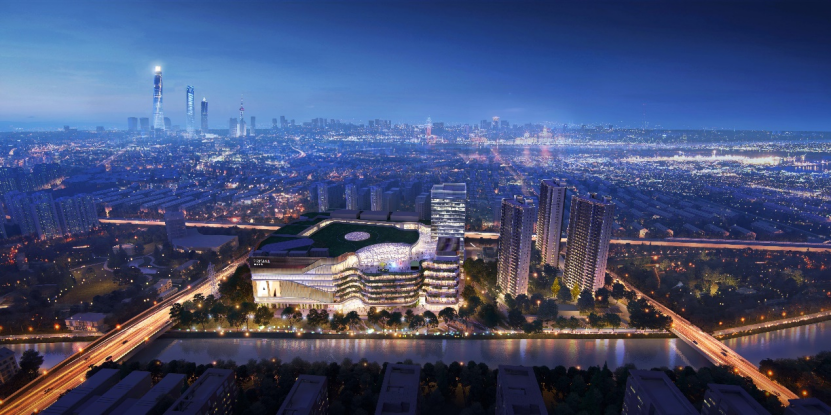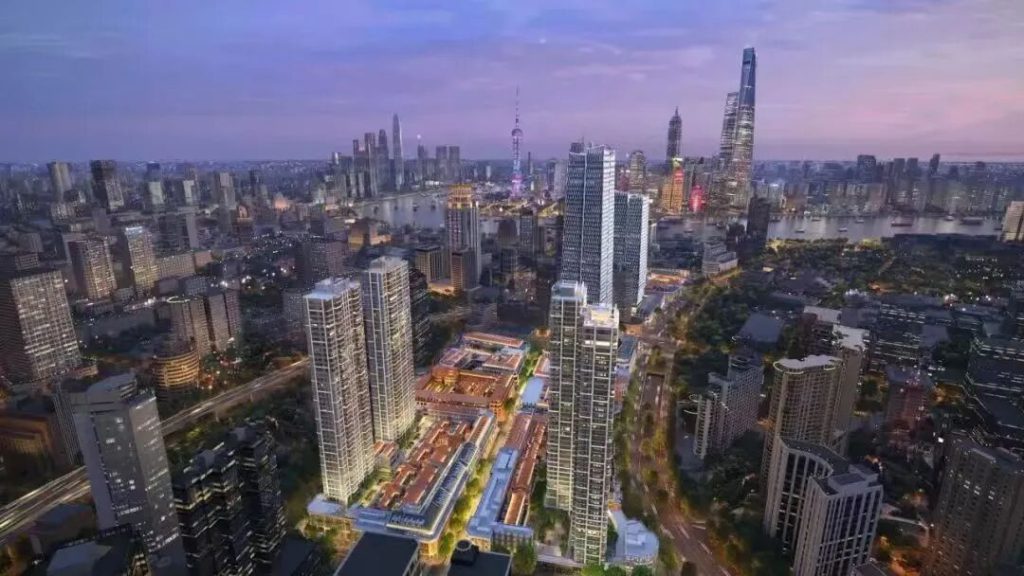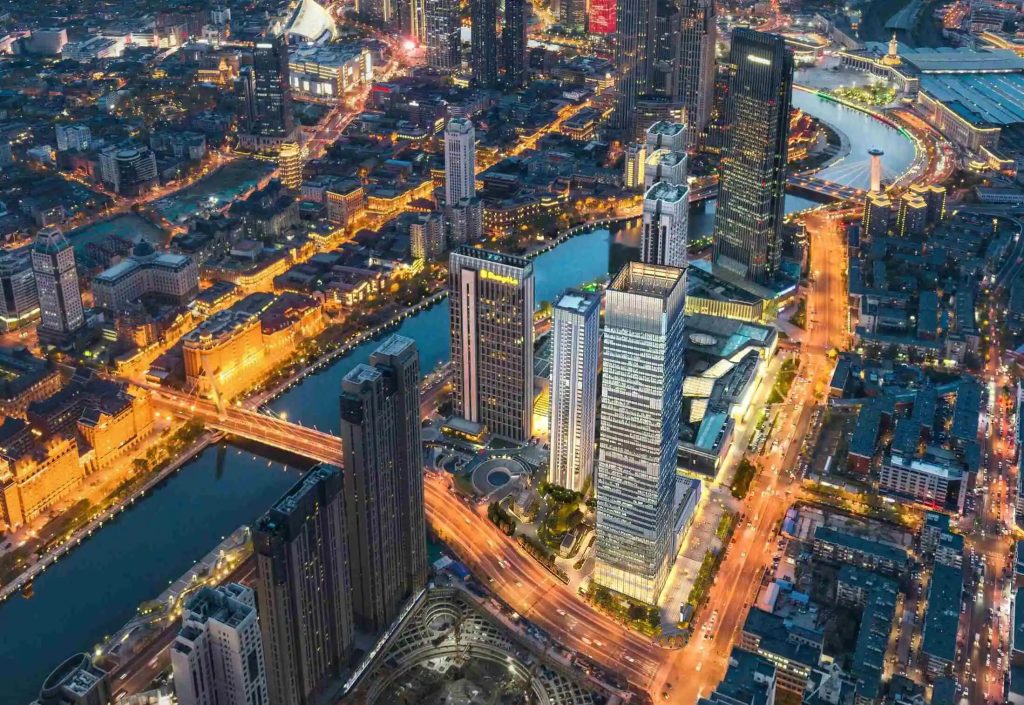Kerry Properties: Relentlessly Battling for the Mainland Market
Kerry Properties Shows “Extreme” Financial Discipline Despite Profit Drop.Net profit fell 22%, the debt ratio stayed tightly controlled in the mid-40% range, and the company still holds an impressive 49.7 million square feet of land reserves—Kerry Properties’ 2025 half-year results highlight an almost austere approach to finances.According to the interim report, revenue for the first half of 2025 reached HK$8.059 billion, a 60% increase year-on-year. Yet shareholders’ profit was only HK$612 million, and stripping out one-off items, underlying profit dropped 30%. Behind this “higher revenue but lower profit” picture lies a deliberate strategy: spend carefully, accelerate cash collection, and prioritize cash-flow security over scale expansion.“The overall economy and real estate market still face significant short-term challenges, and the Mainland’s economic rebalancing will inevitably be bumpy. We will remain vigilant and focus on maintaining the company’s stability and resilience,”—Chairman Kwok Kong-nin stated in the earnings report.In today’s uncertain climate, “spending cautiously” has shifted from a temporary tactic to a long-term management philosophy for Kerry Properties.
Famous for its steady, conservative “slow-build” style, the Hong Kong developer continues to grow its Mainland footprint while experimenting with urban renewal and new business formats to build staying power across economic cycles.Revenue Up, Profit Under Pressure.The company cites multiple reasons for the profit squeeze: lower development-property margins, reduced rental income, higher taxes, and rising costs—including pre-opening expenses for new investment properties and an increase in non-capitalized financing costs.By segment:Property Leasing & Other Income: HK$2.502 billion, down 6% from H1 2024.Hong Kong Portfolio: Rental income HK$547 million (2024: HK$596 million); operating profit HK$419 million (2024: HK$461 million); gross margin steady at 77%.Mainland China (ex-hotels): Rental income HK$1.955 billion (2024: HK$2.053 billion); operating profit HK$1.366 billion (2024: HK$1.52 billion); gross margin slipped from 74% to 70%.Hong Kong: Stable Occupancy Despite Softer MarketKerry Properties holds a diversified portfolio of offices and retail spaces, including MegaBox/Enterprise Square Phase 5, Kerry Centre, and luxury Mid-Levels apartments.Rental income dipped due to a sluggish office/retail market, several units converting to for-sale properties, and the repositioning of The Aster.

Excluding these factors, Hong Kong rental income fell 4% year-on-year.Despite this, retail occupancy remained steady compared to end-2024.Mainland: Retail Lifts OccupancyOn the Mainland, the investment and hotel portfolio spans prime-city offices, retail, serviced apartments, and hotels. At constant exchange rates, overall rental income slipped 5%, with lower office and apartment rents partly offset by a slight rise in retail rents.Retail Strength: Mainland retail occupancy hit 90%, edging up from 89% a year earlier. Floor area under management also expanded sharply thanks to new mixed-use projects in Hangzhou, Tianjin, and Shenzhen Qianhai.Shanghai Flagship ProjectsIn Shanghai’s Huangpu District, Kerry acquired 10 plots above the Yuyuan Metro Station in late 2022 and mid-2023 to develop a massive integrated complex of apartments, Shikumen townhouses, offices, retail, hotels, and community facilities.March 2025 Milestone: The first phase of the residential project “Jinling Huating” launched over 150 large flats that sold out immediately, generating RMB 9.2 billion—setting multiple new-home records in Shanghai and underscoring the area’s appeal to high-net-worth buyers.Beyond the “land-king” Jinling Road project, Kerry and GIC’s joint PRISMA Xinjia Center TOD development in Pudong—around 430,000 sq m total GFA—topped out structurally in February 2025 and is slated to debut in H1 2026.
Kerry Properties Doubles Down on Mainland Expansion With Disciplined Growth.Kerry Properties’ Bohai Rim footprint is finally delivering fresh momentum. Tianjin Kerry Centre is set for a major debut this year, as Phase II—including the new B Tower and Enterprise Plaza—comes online after a decade of quiet preparation. In Shenyang, Kerry City, which opened in 2018, is on track to welcome its own Phase II retail expansion in 2026.According to the mid-year report, over the next six years and beyond the Group expects to add 7.6 million sq ft of gross floor area to its investment-property and hotel portfolio, including roughly 4.5 million sq ft of office space, 2.9 million sq ft of retail, and 200,000 sq ft of hotels. Key growth cities include Shanghai (Pudong and Huangpu districts), Wuhan, and Shenyang.This steady land-bank strategy reflects Kerry’s long-term plan to deepen its Mainland commercial operations and to create value through prime locations and diversified formats.“The Group possesses a strong land reserve to support years of growth ahead and will maintain a prudent and disciplined approach to land banking for sustainable development,”—Kerry Properties’ interim report.By investing early and heavily in Mainland projects, Kerry has earned the confidence to “spend cautiously” even in uncertain times.Unlike other Hong Kong developers—some chasing ultra-luxury, others mass-market volume—Kerry treads a middle path, building differentiation through fresh concepts and social experiences.

Dual-Track Product Strategy.Kerry now runs a clear two-brand model:“Kerry Centre” – positioned for affordable luxury and elite shoppers. Shanghai Jing’an Kerry Centre, opened in 2013, was China’s first mall to explicitly target the light-luxury segment.“Kerry Parkside/Kerry Everbright City” – focused on family and lifestyle needs. Shanghai Pudong Kerry Parkside, at 45,000 m², is a family-oriented shopping hub with home, dining, and children’s concepts.This twin approach neatly segments its audience: Kerry Centre serves urban elites and high-net-worth travelers, while Kerry Parkside digs deep into local family consumption, illustrating flexibility and market fit.Shanghai: From Core to Even More Central.Kerry operates three major retail projects in Shanghai: Jing’an Kerry Centre, Pudong Kerry Parkside, and Kerry Everbright City.Big-data from Winshang shows Jing’an Kerry Centre averaged 124,000 daily visitors in H1 2025, up 27% year-on-year, firmly holding the district’s top spot.Brand updates continue to drive buzz.February: Asia’s largest LOEWE Casa opened on Nanjing West Road (1,000 m²), blending art, fashion, and craftsmanship.March: The 800 m² BOSS China flagship debuted alongside the nation’s first BOSS Café.Today the mall hosts a benchmark “first-store” lineup: LOEWE Casa, BOSS flagship, UNITED ARROWS’ first Mainland store; activewear pioneers like VUORI (China debut), Goldwin Shanghai flagship, Wilson Shanghai flagship, and MAAP’s first global concept shop; plus top beauty names such as PAT McGRATH’s Shanghai debut and dessert concept TangSuo.Landmark Jinling Road ProjectKerry’s largest Mainland investment to date, the Jinling East Road project, spans about 670,000 m².
The plan preserves the area’s historic qilou arcade façades while integrating modern retail, offices, cultural venues, and performance spaces.With roughly 120,000 m² of commercial space and a fully connected TOD design, the development features a 1-km arcade street linking the Bund, Yuyuan, Nanjing East Road, People’s Square, Xintiandi, and Huaihai East Road. Full opening is targeted for 2028.PRISMA Xinjia Center, Pudong.In partnership with global investor GIC, Kerry is co-developing the PRISMA Xinjia Center at Jufeng Road/Zhangyang North Road—one of the six city-level retail hubs in Pudong’s “4+6+N” consumption plan.Built on a transit-oriented (TOD) model with Metro Lines 6 and 12, it aims to meet demand from Zhangjiang Science City headquarters tenants.Hua Zhimen Capital will handle overall development and operations.Expansion Beyond Shanghai: From Tier-1 to Strong Tier-2.Starting in Shanghai, Kerry has quickly extended north to Tianjin and Shenyang, south to Hangzhou and Shenzhen, and west to Wuhan, forming a network across major economic belts.Yangtze River Delta – Hangzhou Focus:Hangzhou Kerry Centre, opened 2016, shifted from mainstream to high-end streetwear in its first major revamp (2023), adding 12 first-stores in 2024. Winshang data shows H1 2025 footfall averaged 62,300 daily visitors, up 30% year-on-year.Hangzhou Kerry Parkside (Gongshu District) will exceed 250,000 m² GFA with over 100,000 m² retail, plus Grade-A offices, the JEN Hotel, serviced apartments, and residences. Opening is slated for 2026.

The coming two years will see a crowded high-end retail pipeline—Hang Lung Plaza, Hangzhou IFC, Olympic Sports SKP—yet Kerry’s two projects, in the city center and a rising district, create complementary positioning.Greater Bay Area Breakthrough – Shenzhen:Kerry first built Luohu Kerry Centre and Futian Kerry Plaza, and now invests heavily in Qianhai Free Trade Zone.The three-phase Qianhai Kerry Centre, over 400,000 m² with offices, apartments, retail, and a hotel, already boasts LEED Platinum and WELL Gold certifications. The retail component, Qianhai Kerry Parkside, totals about 48,000 m².Southeast Non-Standard Play – Fuzhou:The “Rongcheng · Jiangshangtu” project in Fuzhou’s Cangshan District fronts the Min River with 460,000 m² of high-end offices, river-view apartments, boutique retail, and luxury residences.Its commercial design breaks the traditional “mall box,” creating four themed street districts—Jiafang, Lixiang, Sky Street, and Rongli—for an open, pedestrian-friendly experience.Outlook: Turning Location Value into Ecosystem ValueIn a landscape of rising revenue but profit pressure, Kerry’s steady hand shows how prudent management buys resilience.Its ability to “trade time for space” will depend on two key factors:Executing flagship projects such as Jinling East Road and PRISMA to convert location value into ecosystem value.Optimizing capital structure—via asset securitization and REITs—to ease margin pressures while maintaining its signature slow-development pace.